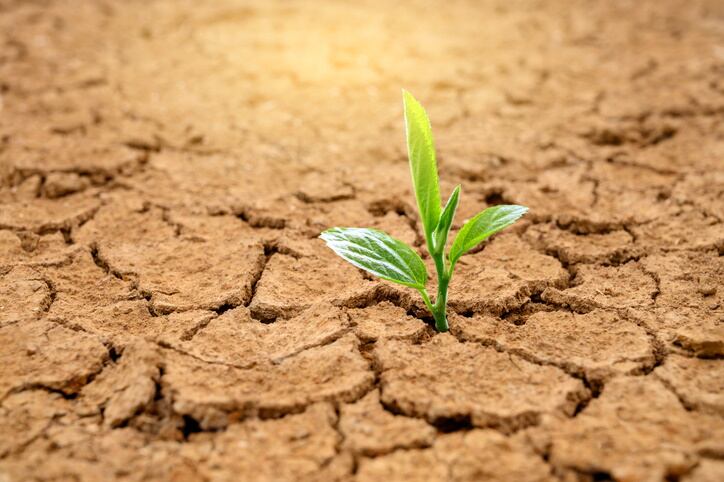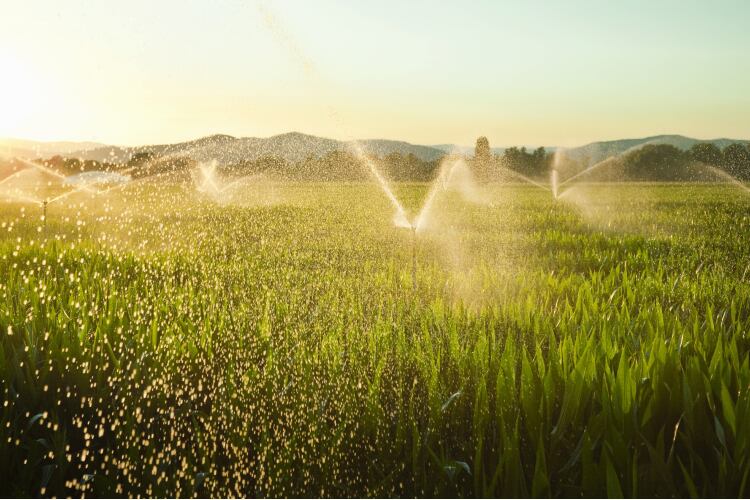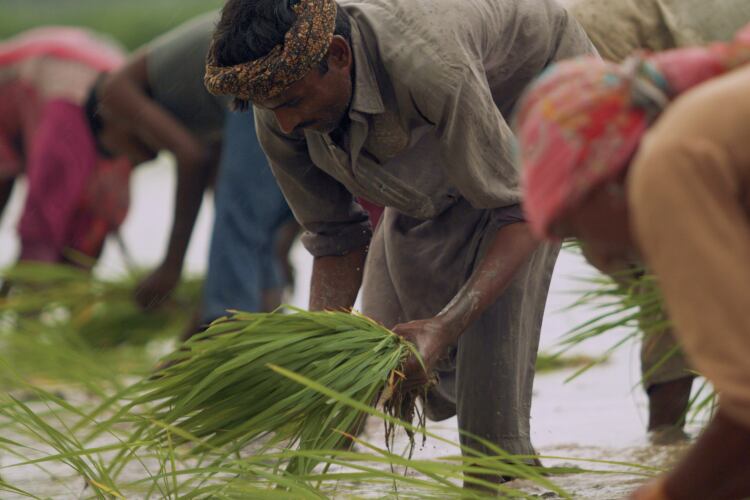Food production is reliant on water, with an estimated 70% of all extracted freshwater used for agriculture alone. The UN’s FAO suggests it takes between 2,000 and 5,000 litres of fresh water to produce a person’s daily intake of food. There is no food security without water security.
While carbon might be making the headlines, water is at the sharp end of climate change, Mars’ Kevin Rabinovitch told FoodNavigator.
“People talk about carbon as the shorthand for climate change. People tend to think about climate change as a temperature thing. We hear about 1.5°C, 2°C, but really climate is better thought of as the combination of temperature and water. It includes what happens with storms, what happens with rainfall, floods, droughts,” Rabinovitch said.
“Some of the most immediate impacts of climate change come in the form of water more than temperature. We are seeing unprecedented shifts in precipitation patterns around the world.”
Today, it is significantly wetter in eastern North and South America, central and northern Asia, and northern Europe, than it was a century ago. Meanwhile, it is drier in the Sahel, southern Africa, the Mediterranean and southern Asia. “We are seeing precipitation patterns that are 50% higher or lower than they were historically,” the Mars sustainability expert observed.
The incidence of both droughts and floods are rising. According to NASA’s Global Precipitation Measurement, the water cycle is intensifying as rising temperatures increase evaporation, resulting in more frequent and intense storms that carry higher flooding risk, while drying over some land areas also increases the threat of drought. UN data reveals that 2.3bn people live in water-stressed countries. If no action is taken, this issue is expected to impact over half the global population by 2050.
“There are parts of the Middle East that were the historical home of agriculture… it increasingly looks like there will be large areas that will have to be abandoned,” Rabinovitch warned. “Water is the pointy end of the spear of climate change. Needing to manage and plan for water is really key.”
Food and beverage businesses must radially re-think their approach to water management which, Rabinovitch noted, has historically been a ‘free or nearly-free’ input to businesses.
“Not everyone has fully appreciated how important an input it is. And the realisation that it might no longer be free, or might not be available at all in certain places and times, makes it quite a material financial business risk that people need to be thinking about.
“Any risk that is systemic that you find a way to manage and mitigate is an opportunity for you as a business.”

Achieving water balance in most stressed watersheds
Mars recently committed to achieving water balance in high water stressed operations by 2025. This target covers the five manufacturing sites the company has identified as facing the greatest water issues: Guadalajara, Contemorelos, Queretaro, Santa Catarina and Toluca. These facilities produce Mars brands including Pedigree, Whiskas, Snickers and M&Ms.
The pledge will see Mars matching water used at the sites through the treatment and reuse of wastewater and by engaging in collaborative water projects that reduce water stress and make water more available in the watershed.
As part of this, Mars will also be introducing ‘advanced water-stewardship programs’ to improve water efficiency, achieve water circularity by ensuring treated wastewater is discharged in a way that reduces stress in watersheds, and working collaboratively to balance remaining residual water use through projects that address water stress in a site’s catchment.
The business has plans to expand these programs to an additional six manufacturing sites in Asia and Africa in the ‘near future’.
Mars’ long-term ambition: To eliminate ‘unsustainable’ water use
The action Mars is taking within its own operations builds on its multi-billion dollar 'Sustainable in a Generation' plan to improve water availability and eliminate unsustainable water use, which Mars defines as ‘water use in excess, calculated on the stress level in each watershed’. This includes a commitment to eliminate unsustainable water use in its full value chain, starting with a 50% reduction by 2025.
This broader ambition is a far greater challenge because water use in Mars’ own factories is just the tip of the iceberg, Rabinovitch told us.
“One of the things that’s true for any business based on agriculture is the water used in our factories is going to be a few percentage points of the water used across our entire value chain. In the case of Mars, one percent of our water use is in our factories, 99% is in our agricultural production,” he revealed.
“The programme we are building out as we look at our value chain is 100 times the size of our factory water footprint.”

When assessing the action that companies are taking to address water sustainability, it is therefore vital to look at whether commitments extend across the value chain, Rabinovitch elaborated. He believes this is an area where water is playing catch-up.
“One of the spaces water needs to catch up is commitments across full value chains. There are a lot of food businesses where their comprehensive commitments cover their operations - their factories, their bottling plants, their food processing sites. They are starting to do things in agriculture, but they don’t have those broad commitments, like they might their GHG targets. That’s something that will need to be part of the future. That’s how you move from being interested in doing a couple of clever pilots to really trying to solve problems at scale… The commitment we’ve made is to our full value chain.”
Tackling unsustainable water use in the value chain is being achieved by mapping Mars’ total water use across its global supply chain, reducing its impact in high-stressed watersheds, and transforming its agricultural supply chain by upskilling farmers in sustainable farming practices that drive water efficiencies, the company said.

Mars has established programmes in rice and mint that, Rabinovitch explained, are already showing positive results. “Those are two of the major drivers of unsustainable water use in our footprint [and] we are already making significant progress. That’s the real key to what really matters in the food sector – water use in agriculture.”
The company’s Sustainable Rice Platform (SRP) has established a standard for sustainable rice production that promotes climate and water-friendly rice production methods. As of 2020, Mars Food sources 99% of its rice from farmers working towards the SRP standards.
Similarly, through its Shubh Mint Program in Northern India, Mars has trained over 24,000 farmers on Good Agricultural Practices.
“Much of the mint we source comes from India where its grown by smallholder farmers. The profitability of the crop is critical to their livelihoods. Finding ways to help them become more water efficient means they can more reliably produce a crop and make the income they need to feed their families and send their kids to school. Water efficiency in a stressed watershed like India also creates resilience. I you are less dependent on that volume of water you are in less trouble in the year where it’s not available,” Rabinovitch elaborated.
To date, Mars’ mint scheme has helped reduce the demand for water from participants by 50%, whilst increasing income and livelihoods of farmers in the region by 250%.
Putting words into action
How does Mars move from top-level commitments to driving change in the way it uses water to produce food and pet products?
Rabinovitch said that the food maker has a ‘history’ of using its factories ‘to figure stuff out’ before taking strategies to the broader value chain, where impact will be larger.
“We set targets, develop strategies, figure out things like water balancing or renewable energy in our direct operations, and take what we learn from that to build programmes to tackle those same problems in our value chain. Obviously having to address the additional complexities,” he explained. “We use our sites as the proving-grounds so when we go to scale in our value chain we know what we are talking about and we know what we are doing.”
Of course, he continued, within the agricultural supply chain the challenges and opportunities to improve water stewardship differ from a factory setting. “When we get to agriculture things are a little different but at a high level the ideas of water efficiency and water balancing are the same. The strategy for how to achieve water balancing could be quite different. It could be breeding better crop varieties, it could be planting cover crops, it could be building soil carbon so the soil can hold onto the water and can rely more on rainfall and less on irrigation.”

‘It makes sense to work together’ in shared supply chains
Mars’ water strategy comes as the US food giant joins the UN Global Compact CEO Water Mandate’s Water Resilience Coalition (WRC), alongside over 30 global businesses to drive progress against the global water crisis. This builds on Mars’ existing work with the CEO Water Mandate, where since 2015 the company has worked to advance progress towards SDG6 (Clean Water & Sanitation).
The coalition aims to increase investments in innovative solutions to the water-climate crisis and encourage collective action to build water resilience in high water stressed regions.
As part of joining the Water Resilience Coalition, Mars will be partnering with other businesses on the Charco Benditowater stewardship program in central Mexico, which will restore land along waterways critical to water regeneration by harnessing collaborative corporate action.
Rabinovitch believes that an industry-wide approach is needed to tackle issues like water security and he sees promising progress in this area. “One of the big evolutions in the sustainability space is all the food manufacturing companies and retailers have worked out we share supply chains. We all buy from the same suppliers, who buy from the same farmers. Unlike our factories, when you get back to farms there is a lot of shared supply chains because of the commoditisation of the world. Because of that, we’ve all worked out it makes sense to work together on aspects of sustainability.”

